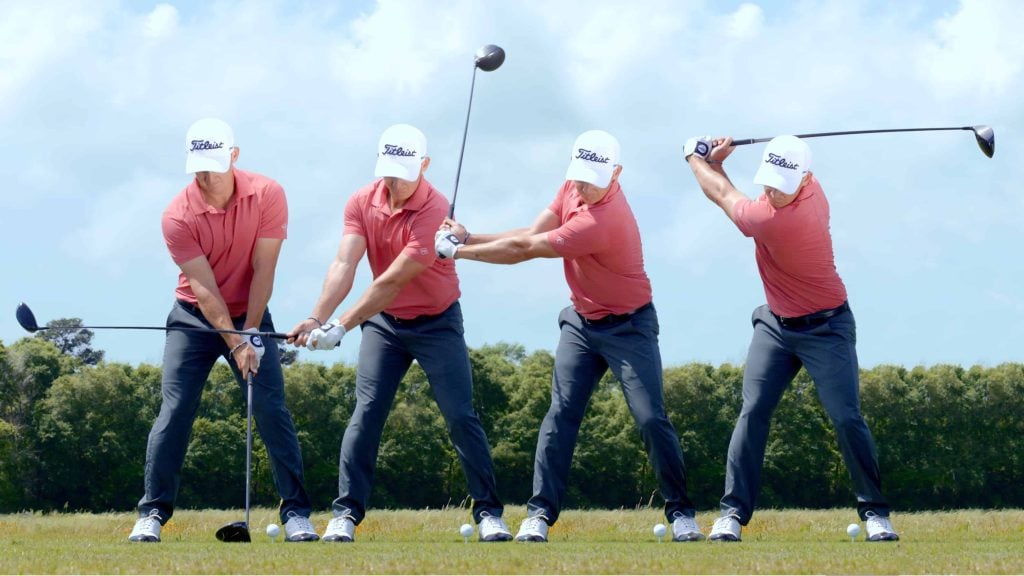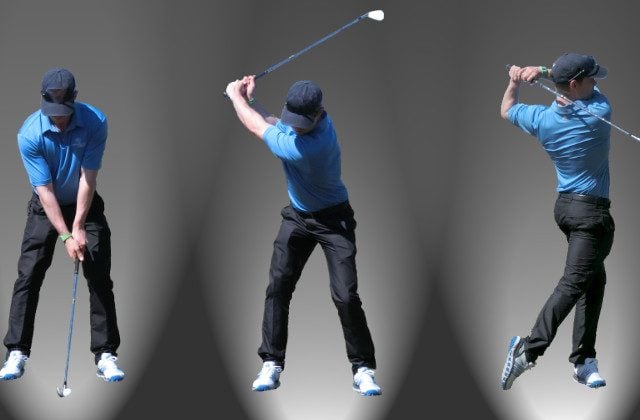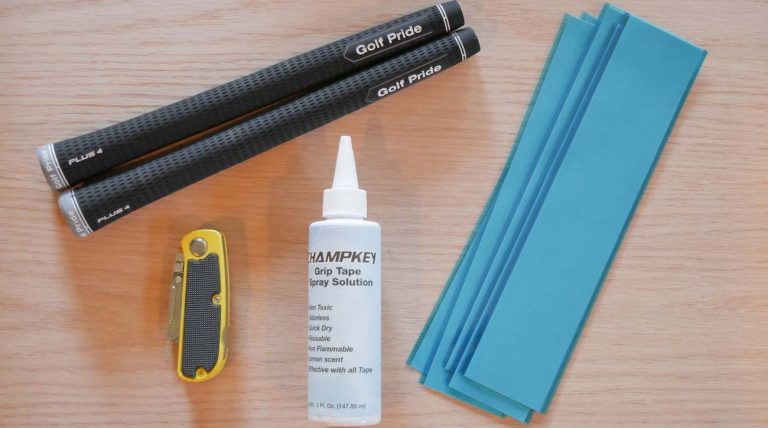How to hit a golf ball
Key Takeaway:
- Hitting the golf ball straight is essential for success in golf. It provides several benefits, such as increased accuracy, consistency, and distance.
- Professional players face challenges in hitting the ball straight due to factors like wind conditions, course layout, and pressure. However, mastering techniques and practicing can help overcome these challenges.
- Proper alignment and grip play a crucial role in hitting the ball straight. Correct body alignment and using the correct grip technique ensure square contact with the ball, leading to straight shots.
- Setting up for a straight shot involves positioning the ball in a neutral position on the tee or ground and aiming accurately. Practice is important to develop accuracy in aiming.
- Club setup and alignment are essential for hitting the ball straight. Aligning the clubface towards the target and choosing the correct club based on height, swing speed, and power contribute to straight shots.
- Body pivoting and balance are key components of hitting the ball straight. Effective body pivoting enables a consistent swing path, while maintaining balance and tempo ensures proper execution.
- Holding the finish improves balance and stability after hitting the ball, while shot tempo influences the direction of the shot. Both factors contribute to hitting the ball straight.
- Understanding golfing terms, fundamentals, and maintaining a proper stance and posture are basic requirements for hitting the ball straight. These elements form the foundation for a good swing.
- A step-by-step swing technique, comprising the takeaway, backswing, downswing, and follow through, must be executed properly to hit the ball straight. Each step contributes to the overall swing and shot accuracy.
- Mastering different types of golf swings, such as drives, putts, chips, flop shots, and punches, is essential. Each type of swing affects the direction and distance of the shot.
- Hitting a driver consistently poses challenges for amateur golfers. Making adjustments to swing mechanics and setup can help improve driver shots and increase consistency.
- To maximize distance and accuracy with a driver, techniques such as achieving the correct launch angle and understanding the impact of the angle of attack on hitting the ball well should be implemented.
- Adjustments in force, tilt, and power are necessary for different shots, including fairway shots, bunker shots, and approach shots. Understanding and implementing technique adjustments can enhance shot control.
- Proper putting technique includes adjustments to stance and grip to achieve accuracy and consistency. Maintaining a still head during the putt is crucial for successful putting.
- A recap of the key points for hitting a golf ball straight includes the importance of mastering alignment, grip, setup, body pivoting, shot tempo, swing technique, and adjustments for different shots. Implementing the MECE framework in analyzing golfing techniques results in comprehensive and effective golfing strategies.
Importance of Hitting a Golf Ball Straight
Hitting a golf ball straight is crucial in the game, offering a range of benefits for players. From improved accuracy to longer distances, mastering this skill can significantly impact your performance on the golf course. In this section, we will explore the benefits of hitting the ball straight, as well as the challenges faced by professional players in achieving this level of precision. So, let’s dive in to understand why hitting the golf ball straight is essential in the game.

Benefits of hitting the ball straight
Hitting the ball straight on a golf course brings many advantages. Primarily, it boosts accuracy and precision. This enables golfers to direct the ball around the course and place it well for the next shot. This reduces the danger of hitting bunkers and water, and lowers penalty strokes, which leads to better scoring.
Plus, a straight shot also helps with power and distance. When the ball is struck with perfect alignment and contact, it can generate more speed and transfer more energy. This means longer shots and more power.
Also, hitting the ball straight boosts confidence. When golfers can hit it straight consistently, they trust their swing. This can make them consistent and increase their performance.
For a straight shot, alignment and grip are important. Golfers need to line up their body with the target line. Keeping the correct grip helps control the clubface during impact, creating a straighter flight path.
For a good setup, golfers should position the ball in a neutral spot relative to their stance, and aim accurately. Minor mistakes in aiming can cause big errors in trajectory. To get used to these techniques, practice is essential.
So, hitting the ball straight has many benefits: accuracy and precision, less risk of hazards, increased power and distance, improved confidence, and better consistency and performance. With proper alignment, grip, and setup, golfers can hit the ball straight more often.
Challenges faced by professional players
Professional golfers face challenges aplenty when it comes to straight hitting. These can really impact their performance and success on the golf course.
- Weather conditions, such as wind direction and speed, can cause a shift in the ball’s trajectory and accuracy.
- Consistent swing mechanics and technique are also important for the pros. Deviations can lead to a poor shot.
- The pressure and expectations of pro tournaments can be a challenge. Mental strength is key to performing well.
- Adapting to varied courses and conditions is another complexity. Strategy and approach must be adjusted accordingly.
For golfers to hit straight, they need to have both technical skills and mental resilience. Alignment and grip are essential for a straight shot, or else your game may end up in the rough.
Proper Alignment and Grip for Hitting the Ball Straight
Proper alignment and grip are crucial for hitting a golf ball straight. Discover the impact of body alignment on your shots and learn the correct grip technique for achieving square contact with the ball. Mastering these fundamental aspects will significantly improve your accuracy and consistency on the golf course.

The role of body alignment in hitting the ball straight
Mastering the art of hitting a golf ball straight requires proper body alignment. Feet, hips, and shoulders must be parallel to the target line. This gives a neutral swing, reducing the chances of slicing or hooking the ball. Balance and stability in the swing is also improved.
Grip technique also matters. Make sure it’s firm yet relaxed, with both hands working together. This keeps the clubface square at impact, for a straighter shot. Hand positioning should also be neither too strong nor too weak.
With practice and guidance from pros, golfers can hit shots with precision and control. Get a grip and make square contact, or your ball might take a detour to the moon!
Correct grip technique for square contact
To hit the ball straight and maximize accuracy, one must have the correct grip technique for square contact.

Here’s how:
- First, put your hands in a neutral position on the club handle.
- Next, make sure the V formed by the index finger and thumb of your left hand (for right-handed players) points towards your right shoulder.
- Place your right hand on top of your left hand, with the thumb resting against the index finger knuckle.
- Don’t grip too tightly – this can stop proper wrist action in the swing.
- Keep your grip relaxed but firm throughout the swing and maintain both hands connected through impact.
- Practice regularly to build muscle memory and consistency.
Other elements such as body alignment, posture, and balance also play a part in square contact. Experienced golfers’ stories can help too – they may tell you how they overcame inconsistent direction by adjusting their grip based on advice. With practice and dedication, they improved their accuracy and scores on the course.
By understanding and applying the right grip technique for square contact, golfers can increase their chances of hitting the ball straight and boosting their performance. Investing time and effort into mastering this key aspect of the game will lead to more accuracy, consistency, and enjoyment on the golf course.
Setting Up for a Straight Shot
When setting up for a straight shot in golf, two crucial factors come into play: the neutral position of the ball and the importance of accurate aiming and practice. Mastering these aspects is essential to improve your golf game and achieve consistent, precise shots.
By understanding the optimal ball position and developing a keen sense of aim through dedicated practice, you can significantly enhance your chances of hitting the ball straight and maximizing your golfing potential.
The neutral position of the ball on the tee or ground
Golfers should align the ball with their intended target to achieve a neutral position on the tee or ground. This allows for a square contact between the clubface and the ball. Also, they should maintain a consistent distance from the body.

This gives enough space to execute the swing. Pay attention to the neutral position and follow alignment and positioning techniques. It can impact accuracy and control of the shot.
Data emphasizes accuracy and precision. Practicing aiming and aligning techniques can improve accuracy and performance. Consider wind direction, elevation changes, and personal preferences when preparing for a straight shot. Adapt technique accordingly to increase chances of a straight shot.
Proper alignment and setup for each shot improve performance. Professional golfers data prove this. Implementing alignment and positioning techniques can make a difference in accuracy and control.
Importance of accurate aiming and practice
Accurate aiming & practice are a must for golf. Precision is the key to hitting the ball straight. Devoted practice is essential to develop skills & techniques. This allows golfers to aim at their target & hit it.
Precision & practice can’t be overlooked when it comes to consistent golf results. Alignment helps golfers position themselves & go for straight shots. Practice leads to muscle memory & better accuracy.
Practicing also helps refine technique & make adjustments. It lets golfers identify flaws in their swing, grip, or alignment & work on them. This leads to a more reliable & repeatable swing & better performance on the course.
In conclusion, accurate aiming & practice are vital for hitting a golf ball straight. They help golfers cultivate consistency & improve their overall performance. Focused practice & attention to detail, especially in terms of alignment, will increase the chances of hitting straight shots.
Correct Club Set-up and Alignment
Ensuring correct club set-up and alignment is crucial to hitting a golf ball accurately. In this section, we’ll cover key aspects like clubface alignment towards the target and choosing the right club based on height, swing speed, and power. Stay tuned to learn the trade secrets that will improve your accuracy and distance on the golf course.
Clubface alignment towards the target
Clubface alignment towards a target is key for hitting a golf ball straight. If it’s not aligned correctly, the ball can go off course.
Golfers should focus on their setup and address position to ensure the clubface is square to the target line. This means, for right-handed golfers, the clubface should be pointing directly at the target, or slightly to the right of it. It’s important for clean, square contact with the ball at impact.
For precision, golfers must pay attention to detail. They should make sure their stance is parallel to the target line, and their shoulders, hips, and feet are aligned. This will create a consistent swing path, leading to better clubface alignment.
It’s essential to note that clubface alignment is not always the same. Different clubs may need different alignments based on things like loft angle and desired shot shape. For instance, when using a driver, the clubface may need to be slightly open (pointed left for right-handed players) to get a draw or fade.
By understanding how clubface alignment affects accuracy, golfers can adjust their setup and have a better chance of hitting the ball straight towards their target.
Choosing the correct club for height, swing speed, and power
Height is important when choosing a club. Taller golfers may need longer clubs for a bigger swing arc and better accuracy. Shorter golfers might go for shorter clubs. Swing speed matters too. Players with fast swings should use stiffer shafts; slower swings need flexible shafts. Power is important too – strong players may go for lower lofts for distance, weak players might prefer higher lofts for lift.
Other factors include playing conditions and preferences. Some courses may require special clubs. Balancing your body pivot is key to hitting the ball straight. Consider all factors to optimize your performance and get maximum distance. Don’t throw your club after bad shots!
Body Pivoting and Balance
Effective body pivoting and balance are crucial elements in achieving a straight shot when it comes to hitting a golf ball. In this section, we will explore the significance of proper body pivoting and the importance of maintaining balance and tempo throughout the swing. Discover how mastering these aspects can greatly enhance your golfing performance and help you achieve more accurate and powerful shots.
The role of effective body pivoting in hitting the ball straight
Golfers need effective body pivoting for a straight ball flight. Balance and tempo are key. Weight should transfer from the back foot to the front foot. A stable center of gravity is also important. Holding the finish after contact reinforces proper body alignment. This helps golfers optimize their swing mechanics and accuracy. Effective body pivoting is crucial for hitting the ball straight.
Maintaining balance and tempo during the swing
For better golf swings, focus on balance and tempo. Align your body so feet, hips and shoulders are parallel to the target line. Distribute weight evenly between both feet. Rotate your body smoothly. During the backswing, turn your shoulders away from the target. Start the downswing by rotating your hips towards the target. Maintain a controlled rhythm as you pivot.
Sequence your movements correctly. Flow each phase into the next without any jerky or rushed motions for a balanced and controlled swing. Incorporate tempo drills to create a smooth and consistent tempo. Balance helps stability, weight transfer and power generation for long shots. Pivot your body to efficiently transfer energy through each body segment for optimal clubhead speed and a controlled strike.
Practice makes perfect. Develop muscle memory and coordination to better hold the finish and shot tempo for a straight shot. Mastering balance and tempo is like finding inner peace on a chaotic golf course.
Holding the Finish and Shot Tempo
Holding the finish and shot tempo are crucial aspects of hitting a golf ball effectively. It’s fascinating to explore how holding the finish can improve balance and how shot tempo directly impacts the direction of the shot. So, let’s dive into these sub-sections to understand the importance of mastering the finish and controlling shot tempo in the game of golf.
How holding the finish improves balance
For better balance and accuracy in golf shots, hold the finish! This enables proper weight transfer and stability throughout the swing.
- At impact, keep your body aligned and centered with even weight distribution between both feet.
- Extend your arms fully after striking the ball. This helps maintain control of the swing and promote balance.
- Keep your head still and focused on the point of contact throughout the entire swing to avoid any unnecessary movements.
- Utilize your core muscles to stabilize your body and enhance balance.
- Practicing holding finishes will improve muscle memory and balance. Try holding various finishes for several seconds.
Holding the finish is key to improving balance for more consistent golf shots. Regular practice of different finishing positions strengthens control and overall performance on the course. Tiger Woods is a great example of this! He was known for his impeccable balance and control throughout his swing due to his attention to detail and commitment to maintaining a steady finish. His success serves as a reminder of the importance of this technique.
Impact of shot tempo on the direction of the shot
Shot tempo has a huge impact on the direction a ball goes. It can give more control and accuracy over the trajectory of the ball. However, if a golfer rushes their shot with a fast tempo, they can lose control and accuracy. Slow tempo gives consistency, balance, and precision.
To find the ideal shot tempo, practice and repetition is essential for developing rhythm and timing. When a golfer finds their own comfortable pace, it can help with consistency and accuracy on the golf course. Understanding the impact of shot tempo on direction is key for improving one’s game. It can directly influence both distance and accuracy.
Basics of Hitting a Golf Ball
Understanding the basics of hitting a golf ball is essential for improving your game. In this section, we will explore key golfing terms and fundamentals, as well as the importance of maintaining a proper stance and posture for a successful swing. By mastering these foundational elements, you can enhance your technique and increase your chances of hitting the ball with precision and power.
Understanding golfing terms and fundamentals
Golf requires a deep understanding of certain key terms and fundamentals. “Stance” refers to the position of feet relative to the ball, and “grip” is about how the club is held during the swing. This common language is shared among players, coaches, and analysts.
Fundamentals include alignment, balance, and tempo. Alignment means positioning oneself parallel to the target line. Balance ensures stability during the swing, and tempo pertains to timing and rhythm.
By knowing these terms and fundamentals, golfers can communicate better with coaches and instructional materials. They can adjust their stance and grip to make swings that produce desired outcomes.
It’s essential to learn these concepts for skill development in golf. It helps players communicate in the golfing community and execute consistent swings for improved performance on the course. Learning these concepts also enhances one’s overall enjoyment of the game.
To start, mastering the art of a tall, poised stance is the key to success on the fairway.
Importance of a proper stance and posture for a good swing
When it comes to a good golf swing, proper stance and posture are essential. Alignment of the body and how the golfer positions themself matter a lot. Correct alignment and posture mean a more consistent swing, allowing better control of direction and distance of the shot. By adopting the correct stance and posture, golfers can optimize their swing mechanics and increase their chances of hitting the ball successfully.
Golfers must be parallel to the target line. Feet should be shoulder-width apart for balance throughout the swing. A slight knee flexion is also important for stability.
The grip on the club is also vital. Golfers must place their hands on the club for neutral wrist position at address. This helps control the clubface during the swing, resulting in greater accuracy when striking the ball.
To sum up, proper stance and posture are crucial for a good swing in golf. By having correct body alignment, balance, and grip technique, golfers can better hit the ball straight. These factors are important for optimizing swing mechanics and increasing accuracy on the course. Mastering the art of swing technique requires flawless execution.
Step-by-Step Swing Technique
Mastering the art of hitting a golf ball begins with understanding the step-by-step swing technique. Within this section, we will break down the four key steps of a swing: takeaway, backswing, downswing, and follow through. Discover how proper execution of each step plays a crucial role in achieving a straight shot. So, let’s dive into the intricacies of this technique and unleash our golfing prowess.
Four steps of a swing: takeaway, backswing, downswing, and follow through
- Takeaway: The clubhead is moved away from the ball in a controlled manner.
- Backswing: The shoulders and hips rotate, and the wrists hinge to create an arc.
- Downswing: The hips lead the movement, and the arms and hands drop into position.
- Follow through: The club continues towards the target after impact with the ball. Balance should be maintained, and the golfer should finish in a balanced position.
The four steps of a golf swing are vital for accurate and powerful shots. These steps must be incorporated to master this art.
Six steps should be followed for a successful swing. Takeaway is first. Here, the clubhead is moved away from the ball in a controlled manner. Next, the backswing. The shoulders and hips rotate, and the wrists hinge to create an arc.
The third step is the downswing. Here, the hips lead the movement, and the arms and hands drop into position. Finally, the follow through. The club continues towards the target after impact with the ball. Balance should be maintained, and the golfer should finish in a balanced position.
Each of these four steps is crucial for successful golf shots. Variations may differ depending on the shot, like drive, putt, chip, and flop shot. Mastering this art involves precision in each step.
Proper execution of each step for hitting the ball straight
Golfers – here’s a 4-step guide to get you swinging the right way!
- Takeaway: Start smoothly, keep the club low & hold your grip relaxed.
- Backswing: Wide arc & rotate your shoulders, hips & wrists. Keep your eye on the ball.
- Downswing: Transfer weight from back to front & bring the club down quickly. Don’t rush.
- Follow through: Rotate towards the target. Look where you want the ball to go.
Balance & tempo are key. Focus on sequencing & fluidity for improved accuracy & control. Practice makes perfect!
Mastering Different Types of Golf Swings
Mastering the various types of golf swings is essential to improving your game. In this section, we will explore the techniques for different shots such as the drive, putt, chip, flop shot, and punch. Additionally, we will examine how each type of swing directly impacts the direction and distance of your shots. By understanding these nuances, you can enhance your skills and become a more versatile golfer.
Techniques for various shots: drive, putt, chip, flop shot, and punch
Golf players must master the techniques of various shots, such as the drive, putt, chip, flop shot and punch. Each shot calls for different techniques and approaches for accuracy and distance. Knowing the subtle aspects of each shot can boost a golfer’s performance on the course.
- Drive: For a strong, straight drive, set the ball close to the inside of your front foot. Use a broad stance and initiate the swing with a mild shoulder turn. Rotate your hips smoothly and keep a relaxed grip. Focus on hitting the center of the clubface.
- Putt: To line-up properly for putting, stand perpendicular to the target line. Adopt a comfortable stance with slightly bent knees and maintain even speed throughout the stroke. Keep your gaze fixed on the ball and make a smooth pendulum-like movement.
- Chip: When chipping, place the ball slightly behind in your stance and move weight forward. Take a small stance with feet close together and maintain a steady rhythm during backswing and follow through. Keep your hands ahead of the clubhead at impact.
- Flop Shot: The flop shot needs skill and exactness. Open your stance to increase loft and place most of your weight on your front foot. Hit down sharply on the ball with an accelerated tempo to get height.
- Punch Shot: To hit a punch shot under obstacles or in windy conditions, set up with a slender stance and hands ahead of the clubhead. Swing with reduced power by reducing your backswing and following through low to reduce trajectory.
Apart from these basic techniques for various shots in golf, adapting to diverse course scenarios is critical for success. Things such as uneven lies, bunker positions, and approach shots must be taken into consideration and adjusted to.
Through comprehending the nuances of each shot and practicing regularly, golfers can sharpen their skills and raise their chances of hitting the ball accurately and precisely.
From a gentle chip to a forceful drive, every swing type is a gentle nudge or a strong explosion that determines the fate of the golf ball.
How each type of swing affects the direction and distance of the shot
A swing technique in golf greatly influences the ball’s direction and distance. The type of swing you use decides how the ball goes through the air and lands on the target. Variations in grip, alignment, club selection, and body motion all contribute to different results when it comes to accuracy and distance.
Each swing has its own impact on direction and distance. When you drive, you aim for a straight shot that covers a long distance. A putt requires minimal strength and results in a short-distance shot with precision. A chip allows moderate direction control with medium distances. A flop shot achieves a high trajectory, but mainly for shorter shots. Lastly, a punch shot produces low-flying balls with a moderate distance.
In addition, different swings require changes to factors such as club choice, angle of attack, and power control. These changes are essential for determining how each swing affects both direction and distance. By understanding these nuances and practicing the correct techniques, you can maximize your performance on the course.
To improve your golf game, it’s important to get a handle on how each swing affects direction and distance. Mastering different swings and adjusting variables, like club selection and power control, can help you enhance your performance on the course.
Don’t miss out on unleashing your full potential as a golfer by exploring the intricacies of each swing and applying them to your game. Consistency is essential for hitting a driver, just like hiding your disappointment after a slice.
Hitting a Driver Consistently
Hitting a driver consistently can be a challenging endeavor for amateur golfers. In this section, we will discover the common challenges faced by golfers when it comes to hitting a driver. Additionally, we will explore the necessary adjustments required for swing mechanics and setup to improve the consistency of your drives.
Challenges faced by amateur golfers in hitting a driver
Amateur golfers often battle difficulties when hitting a driver. Mainly, getting the right swing mechanics and setup for consistent shots. Without proper technique, golfers can’t manage accuracy or distance, leading to displeasure on the course.
To tackle these troubles, amateurs ought to focus on their swing mechanics and setup. It’s essential to have a firm grip on the club, ensuring square contact with the ball. Also, body alignment plays an important role in hitting the ball straight. Golfers should keep a neutral position of the ball on the tee and aim directly for their target.
Another issue amateurs may face is finding the right club for their swing speed, power, and wanted shot height. Selecting the correct club boosts accuracy and distance, allowing golfers to get better results off the tee.
Although mastering different types of swings is vital in golf, amateurs often find it difficult to keep balance and tempo during their shots. Effective body pivoting helps in hitting the ball straight, while keeping balance ensures a controlled and fluid swing.
Moreover, holding the finish and paying attention to shot tempo also help in hitting the ball straight consistently. By concentrating on these aspects of their swing technique, amateur golfers can upgrade their overall performance.
The secret to hitting a golf ball straight? Make the necessary adjustments to your swing mechanics and setup, so you don’t end up in the rough…or the water!
Adjustments required for swing mechanics and setup
Enhance your golf game with these six steps:
- Align your body correctly for a straight shot. Position yourself parallel to the target line.
- Get the right grip. A neutral one where both hands work together is best.
- Place the ball in a neutral position for consistency.
- Align your clubface towards the target.
- Pick the right club. It should match your speed, power, and trajectory.
- Maintain balance and tempo. This helps control your shots.
Practice these techniques to improve your performance. Make them second nature to improve accuracy and hitting the ball straight. To hit it long and straight: drive like you stole it and putt like it’s your last shot at redemption.
Maximizing Distance and Accuracy with a Driver
Maximizing Distance and Accuracy with a Driver: Discover effective techniques for achieving maximum distance and launch angle, while considering the impact of angle of attack on hitting the ball well. Unleash the power of your drives and improve your overall performance on the golf course.
Techniques for achieving maximum distance and launch angle
Maximizing distance and launch angle in golf requires specific techniques. Optimize swing mechanics and club selection to get the desired results. Implementing these strategies will increase distance off the tee and improve overall performance.
- Body Pivoting: Rotate the hips and shoulders during the downswing for power and clubhead speed. This will generate more power, more distance and a higher launch angle.
- Club Selection: Different clubs have various degrees of loft. This affects launch angle. Select a driver or wood with higher loft for higher launch angle. Lower lofted irons provide more control but less height.
- Angle of Attack: Club striking the ball at the proper angle promotes a higher launch angle and reduces spin. This results in greater carry and roll out. Maintaining this angle of attack throughout the swing will optimize distance off the tee.
Practice, consistency and understanding how body positioning, club selection and angle of attack contribute to overall performance will help golfers achieve maximum distance and launch angles.
Impact of angle of attack on hitting the ball well
The angle of attack refers to the angle at which a golfer’s clubhead strikes the ball during impact. This has a major effect on how the ball is hit. Golfers seek an optimal angle of attack to gain maximum distance and accuracy.
It affects the launch angle and spin rate of the ball. Too steep and the ball will balloon, losing distance. Too shallow it will go shorter.
Hitting the ball well requires getting the ideal angle of attack that matches the swing and desired result. Clubs affect this angle too, for instance using a driver for low spin and max distance, and an iron for control and accuracy.
Swing technique and body position are key to achieving the right angle of attack. Consistent swing path helps minimize variations. Practicing with different clubs can refine this skill.
Adjusting your game is like playing chess – strategic moves are essential for winning.
Adjustments for Different Shots
When it comes to hitting a golf ball, making the right adjustments for different shots can significantly improve your game. In this section, we’ll explore essential techniques to control force, tilt, and power for various shots. Additionally, we’ll dive into adjustment techniques specifically tailored for fairway shots, bunker shots, and approach shots. Mastering these adjustments will help you achieve greater precision and success on the golf course.
Controlling force, tilt, and power for different shots
To gain control of your force, tilt, and power for each shot, follow this 6-step guide:
- Understand shot needs. Analyze distance, elevation changes, and obstacles. Then, decide what force, tilt, and power is needed.
- Grip pressure. Hold the club firmly, but not too tight. This helps you get power and accuracy.
- Change body tilt. Move your body according to the type of shot. For long shots, lean towards your back foot. This gives you balance and power.
- Practice swing tempo. Do this to find a consistent rhythm. This lets you generate the right force with your body movements.
- Move fluidly. Make smooth and fluid swings. Don’t be jerky or abrupt. That makes accuracy harder and makes you use too much force.
- Utilize your clubs. Pick the right clubs for your shot. This helps you control the distance and accuracy.
Also, remember that wind direction and strength play a role in shot outcomes.
By using these techniques to control force, tilt, and power, you can do better on the golf course. You’ll have better precision and confidence.
Adjustment techniques for fairway shots, bunker shots, and approach shots
Golfers need to adjust their approach when hitting fairway shots. Club selection and swing mechanics are key, taking into account obstacles and distance. Alignment and tempo must be precise to reach the target.
When in a bunker, stance and technique must change. Open the clubface and aim slightly behind the ball for a successful lift back on the green.
Approach shots require precision to get close to the target. Aim, club selection, and swing mechanics must be adjusted according to wind speed, green slope, and hazards around the green. Power and force control the distance.
These adjustments are crucial for golfers who want to improve. Understanding how to change their approach based on conditions can help them succeed on the course.
Proper Putting Technique
Proper Putting Technique: From making adjustments to your stance and grip to maintaining a still head during the putt, discover the essential tips for improving your performance on the greens. (Reference: Section – Proper Putting Technique, Sub-sections – Adjustments to stance and grip for putting, Tips for maintaining a still head during the putt)
Adjustments to stance and grip for putting
- Place your feet shoulder-width apart with slight flexion in the knees. This stance provides stability during the stroke, allowing controlled motion without much body sway. Your toes should be parallel to the target line, making sure you’re aligned with the hole.
- Keep the putter firmly with both hands. Your lead hand should be lower on the handle, while the trail hand should rest lightly on top. This arrangement creates a pendulum-like motion and helps maintain a steady stroke rhythm.
- Bend at the waist slightly to create a comfortable angle between your body and arms. Your eyes should be directly over or slightly inside the ball, enabling you to see the target line throughout. Avoid slouching or leaning too far forward – this can disrupt balance and accuracy.
Making these adjustments to stance and grip for putting can help golfers improve control over speed, line, and distance when putting. Plus, remember to keep your head still during the putt – unless you enjoy watching your ball do the Macarena!
Tips for maintaining a still head during the putt
Maintain a still head when putting for accuracy and control. Keep your eyes on the target and avoid any unnecessary movements which could change the direction of the putt. Also, with a still head you will make consistent contact with the ball, leading to more reliable putting results.
Here are some tips:
- Find a comfortable stance: Feet shoulder-width apart, parallel to the target line. Bend your knees slightly and keep your weight balanced.
- Maintain eye contact with the ball: Position it in the centre of your stance. Focus your eyes directly over the ball throughout the stroke.
- Keep your body relaxed: Take deep breaths to relax. Avoid tension as it can lead to unwanted movement.
- Practice proper follow-through: Look at the ball’s original position, before following its path to the hole. Don’t lift or tilt your head during impact.
Practice regularly to maintain a still head when putting. Visualizing the desired line and speed while focusing on the target can enhance your performance. Perseverance and dedication will lead to improved performance and lower scores. Start practicing today! Mastering the art of hitting a golf ball straight takes skill, a dark sense of humour and lots of practice.
Conclusion
In the conclusion section, we will recap the key points for hitting a golf ball straight and explore the benefits of implementing the MECE framework in analyzing golfing techniques. Let’s summarize the essential takeaways and explore how this strategic framework can enhance your golfing skills.
Recap of key points for hitting a golf ball straight
Hitting a golf ball straight is super essential in the game of golf. It helps keep control and accuracy over shots, maximizes distance, and reduces course obstacles. Gettin’ the hang of the key points for a straight shot is essential for both amateurs and pros.
- Correct alignment and grip technique are vital for a straight shot. A square contact with the ball ensures this.
- The ball’s neutral position on the tee or ground sets you up for success. Aiming accurately and practicing helps too.
- Clubface alignment towards the target and the right club based on your height, swing speed, and power all contribute to a straight shot.
- Body pivoting and balance during the swing help deliver a straight shot. Plus, finish and shot tempo control are important.
- Stance, posture, and executing each step of the swing also play a big role.
- Mastering different types of swings (drives, putts, chips, flop shots, punches) give versatility while keeping accuracy and direction.
Plus, special adjustments are needed for different shots like fairway and bunker shots. Players must learn to control force, tilt, and power for each type of shot for straight shots.
Alignment, grip technique, neutral ball position, accurate aiming, consistent practice, clubface alignment, right club, body pivoting, balance, finish, shot tempo, stance, posture, executing each step of the swing, mastering different types of swings, and adjustments for different shots.
Some Facts About How To Hit a Golf Ball:
- ✅ Hitting a golf ball straight is a challenge, even for professional players. (Source: Team Research)
- ✅ The club face must make square contact with the ball for it to go straight. (Source: Team Research)
- ✅ Proper alignment of the body and grip is crucial for hitting the ball straight. (Source: Team Research)
- ✅ Choosing the correct club that fits the player’s height, swing speed, and power is important. (Source: Team Research)
- ✅ Implementing proper technique and adjustments can greatly improve the chances of hitting the ball straight. (Source: Various)
FAQs about How To Hit A Golf Ball
How do I hit a golf ball straight?
Answer: To hit a golf ball straight, it is important to ensure that the club face makes square contact with the ball. Proper alignment of the body and grip, accurate aiming, and maintaining balance and tempo during the swing are crucial. Choosing the correct club and implementing these tips can greatly improve your chances of hitting the ball straight.
What are the basics of hitting a golf ball?
Answer: The basics of hitting a golf ball include understanding terms like stance, address, grounding the club, target, fairway, and green. It also involves having a proper stance, posture, and grip. The swing consists of four steps: takeaway, backswing, downswing, and follow-through. Different types of golf swings, such as drive, putt, chip, flop shot, and punch, each require their own technique and purpose.
How can I hit a driver straight?
Answer: Hitting a driver straight requires making adjustments in swing mechanics and setup. It is important to tee the ball high, widen your stance, position the ball off the front foot, set your hands back at address, tilt your shoulders to adjust the attack angle, grip the club lightly, and focus on hitting the ball with power. It also helps to have a positive angle of attack and properly align the clubface at impact.
What are the proper form and technique for hitting a golf ball?
Answer: To hit a golf ball with proper form and technique, you should focus on having a secure grip and a solid stance. Start by setting up with a natural grip, standing with feet shoulder-width apart, and bending forward from the hips. During the swing, shift weight back as you rotate hips and torso, lead the downswing rotation with the front hip, and maintain balance and a good follow-through. Adjustments for different shots and putting techniques are also important.
What are some driving tips for beginners?
Answer: For beginners, it is important to focus on mastering your stance and driving techniques. Start by setting up with a narrow stance, positioning the ball inside the left heel, aligning the golf ball forward and closer to the target, giving yourself enough distance from the ball, and teeing the ball halfway above the top edge of the club head. During the swing, make sure to check the ball alignment, rotate your upper body and hips, and aim for the best strike location on the clubface.
How can I drive a golf ball for distance?
Answer: To drive a golf ball for distance, you can focus on increasing club head speed, shifting and accelerating your swing during the downswing, and achieving the correct impact position. Adjusting the loft of the club, hitting up on the ball, and getting enough rotation and weight transfer can also help launch the ball higher. Proper technique and adjustments, along with consistent practice, can lead to longer and more accurate drives.






![Custom Fitting for Beginner Irons: Unlocking the Perfect Swing [2024]](https://www.fairwayfindings.com/wp-content/uploads/2024/03/Custom-Fitting-for-Beginner-Irons-768x768.webp)
